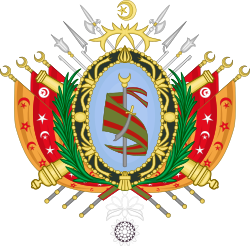Name Lifespan Reign start Reign end Notes Family Image Al-Husayn I ibn Ali الحسين الأول بن علي التركي 1669 – 13 March 1740 15 July 1705 7 September 1735(deposed ) The founder of the Husainid dynasty Husainid Abu l-Hasan Ali I (1688-06-30 ) 30 June 1688 – 22 September 1756(1756-09-22) (aged 68)7 September 1735 22 September 1756 Nephew of Al-Husayn I ibn Ali Husainid Muhammad I ar-Rashid 1710 – 12 February 1759 22 September 1756 12 February 1759 Son of Al-Husayn I ibn Ali Husainid Ali II ibn Hussein (1712-11-24 ) 24 November 1712 – 26 May 1782(1782-05-26) (aged 69)12 February 1759 26 May 1782 Son of Al-Husayn I ibn Ali Husainid Hammuda ibn Ali (1759-12-09 ) 9 December 1759 – 15 September 1814(1814-09-15) (aged 54)26 May 1782 15 September 1814 Son of Ali II ibn Hussein Husainid Uthman ibn Ali (1763-05-27 ) 27 May 1763 – 20 December 1814(1814-12-20) (aged 51)15 September 1814 20 December 1814(murdered ) Son of Ali II ibn Hussein Husainid Mahmud ibn Muhammad (1757-07-10 ) 10 July 1757 – 28 March 1824(1824-03-28) (aged 66)20 December 1814 28 March 1824 Son of Muhammad I ar-Rashid Husainid Al-Husayn II ibn Mahmud (1784-03-05 ) 5 March 1784 – 20 May 1835(1835-05-20) (aged 51)28 March 1824 20 May 1835 Son of Mahmud ibn Muhammad Husainid Mustafa ibn Mahmud 1786 – 10 October 1837 20 May 1835 10 October 1837 Son of Mahmud ibn Muhammad Husainid Ahmad I ibn Mustafa Ahmad Bey أحمد الأول بن مصطفى (1806-12-02 ) 2 December 1806 – 30 May 1855(1855-05-30) (aged 48)10 October 1837 30 May 1855 Son of Mustafa ibn Mahmud Husainid Muhammad II ibn al-Husayn M'hamed Bey محمد الثاني بن الحسين (1811-09-18 ) 18 September 1811 – 22 September 1859(1859-09-22) (aged 48)30 May 1855 22 September 1859 Son of Al-Husayn II ibn Mahmud Husainid Muhammad III as-Sadiq Sadok Bey محمد الثالث الصادق (1813-02-07 ) 7 February 1813 – 27 October 1882(1882-10-27) (aged 69)22 September 1859 27 October 1882 Son of Al-Husayn II ibn Mahmud Husainid Ali III ibn al-Husayn Ali Bey علي الثالث بن الحسين (1817-08-14 ) 14 August 1817 – 11 June 1902(1902-06-11) (aged 84)28 October 1882 11 June 1902 Son of Al-Husayn II ibn Mahmud Husainid Muhammad IV al-Hadi Hédi Bey محمد الرابع الهادي (1855-06-24 ) 24 June 1855 – 11 May 1906(1906-05-11) (aged 50)11 June 1902 11 May 1906 Son of Ali III ibn al-Husayn Husainid Muhammad V an-Nasir Naceur Bey محمد الخامس الناصر (1855-07-14 ) 14 July 1855 – 10 July 1922(1922-07-10) (aged 66)11 May 1906 10 July 1922 Son of Muhammad II ibn al-Husayn Husainid Muhammad VI al-Habib Habib Bey محمد السادس الحبيب (1858-08-13 ) 13 August 1858 – 11 February 1929(1929-02-11) (aged 70)10 July 1922 11 February 1929 [ 7] Cousin of Muhammad V an-Nasir Husainid Ahmad II ibn Ali Ahmed Bey أحمد الثاني بن علي (1862-04-13 ) 13 April 1862 – 19 June 1942(1942-06-19) (aged 80)11 February 1929 19 June 1942 [ 8] Son of Ali III ibn al-Husayn Husainid Muhammad VII al-Munsif Moncef Bey محمد السابع المنصف (1881-03-04 ) 4 March 1881 – 1 September 1948(1948-09-01) (aged 67)19 June 1942 15 May 1943(deposed ) [ 9] Son of Muhammad V an-Nasir Husainid Muhammad VIII al-Amin Lamine Bey محمد الثامن الأمين (1881-09-04 ) 4 September 1881 – 30 September 1962(1962-09-30) (aged 81)15 May 1943 20 March 1956(proclaimed King of Tunisia ) Son of Muhammad VI al-Habib Husainid 













